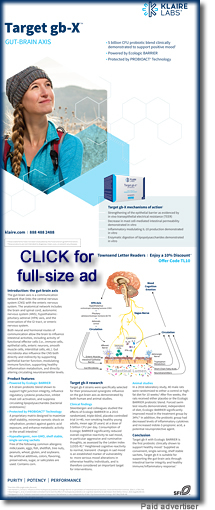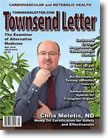|
Page 1, 2
On November 13, 2017, everything having to do with adult blood pressure changed. Instantaneously, according to the major cardiology associations in the US, thirty million more Americans no longer could claim to have normal blood pressure. The number of adults now classified as having Stage 1 hypertension rose from 32 to 46%, and another 12% of the population are now determined to have elevated blood pressure. The new normal for BP is 130/80 mmHg for almost everyone, instead of the previous goal of 140/90. All of the newly labeled patients are now expected to be treated primarily with aggressive lifestyle changes.
The New Guidelines
The American Heart Association (AHA) and the American College of Cardiology (ACC), along with nine other health professional organizations presented new guidelines at the AHA’s fall Scientific Sessions in Anaheim.1 The previous guidelines began with the category of prehypertension. No longer is there prehypertension, but now BP is considered elevated if systolic levels are between 120 and 129 mm Hg and diastolic levels are less than 80. Previously, Stage 1 hypertension began at 140/90. The new guideline reclassifies Stage 1 hypertension as whenever the systolic BP is 130-139 or the diastolic is between 80-89. Stage 2 hypertension now begins when the systolic BP is at least 140 or the diastolic BP is at least 90 mmHg. Thus Stage 1 HBP is lowered from 140/90 to 130/80, and this applies to either systolic or diastolic readings.
 Townsend Letter provides a platform for those examining and reporting on functional and integrative medicine. Please support these independent voices. Townsend Letter provides a platform for those examining and reporting on functional and integrative medicine. Please support these independent voices. |
Approximately 35% of current hypertensive patients are not adequately controlled. With the new guidelines, it is estimated that 53% of patients whose treated BP is currently considered well-controlled will no longer meet that standard. They require additional treatment.
Lifestyle changes are the primary treatments for those with elevated BP and Stage 1 hypertension. Those in both categories will try to prevent disease progression by maintaining the BP between 120/70 and 130/80. The systolic BP guidelines for the elderly had changed from 140 mmHg to 150 mmHg two years ago. But now the upper limit of a normal systolic BP has plunged twenty points to 130/80 for those over 60 years of age, as with the rest of the adult population. The current guidelines are a major attempt to switch the emphasis of treatment to prevention. There are 106 recommendations and 481 pages in the new guidelines. The plan is for every person in these redefined categories to get a comprehensive package of interventions.
 |
Lifestyle recommendations are preferable to drugs in controlling hypertension. |
Soon after the AHA/ACC guidelines were issued, the American Academy of Family Physicians (AAFP), which did not participate in the AHA/ACC review, rejected them. They insisted that Stage 1 hypertension does not begin until the BP reaches 140/90. Patients with kidney disease or diabetes previously had a lower acceptable limit of 130/80, and that continues. We now have two definitions of hypertension, those from cardiologists vs. those from family docs.
An important caveat in the 2017 AHA/ACC guidelines is that additional medications should be prescribed for patients with Stage 1 hypertension only if increased risk is also present. Unfortunately, plenty of increased risk occurs. Additional risk includes previous myocardial infarction, dementia, stroke, peripheral vascular disease, aneurysms, heart failure, high lipids (according to the AHA 10-year risk calculation), diabetes, and kidney disease. Furthermore, socioeconomic status and psychosocial stress are new risk factors that should be considered.
 Despite the expressed intent to shift treatment toward lifestyle changes and avoid increases in medication use, it appears likely that more medications will be prescribed as well. The Stanford Prevention Research Center predicts that 29 million currently treated patients will now require additional medications to achieve BP control.2 Despite the expressed intent to shift treatment toward lifestyle changes and avoid increases in medication use, it appears likely that more medications will be prescribed as well. The Stanford Prevention Research Center predicts that 29 million currently treated patients will now require additional medications to achieve BP control.2
There are six primary lifestyle goals that are specified by the new guidelines: weight loss, reducing sodium, enhancing potassium, 90-150 minutes per week of physical activity, limited alcohol intake, and following the DASH (Dietary Approaches to Stop Hypertension) diet, which emphasizes reduced solid fats and moderate sugar. For many years, integrative physicians have prescribed a much more comprehensive lifestyle program to achieve positive health improvements for their patients. These differing approaches are summarized in Table 1. (.pdf)
It is the purpose of this article to embrace the new guidelines and to suggest a more vigorous drug-free lifestyle program that will be acceptable to the patient, affordable, and effective in preventing vascular disease. Such a program might even enable a patient to discontinue BP medications that he/she is currently taking, which is often a goal that a patient has, perhaps separately from the physician. Integrative medicine has arrived. It is time to show what can be accomplished.
Accurate Measurement of Blood Pressure
According to a quality improvement project coordinated by Brent Egan in South Carolina involving 16 primary care clinics, which followed NIH recommendations, blood pressure readings should include the following for office assessment: Patient arrives without a recent stressful incident and no urgency to visit the rest room. In the previous 30 minutes, no alcohol, food, cigarettes or caffeine, and no exercise are allowed. He or she should be wearing loose clothing. The patient sits in a quiet room, preferably designated for measuring BP, without talking to anyone for three to five minutes. A proper-sized cuff is applied snugly around the upper arm. Both feet are flat on the floor. Three automated readings of BP are taken. An average of the three readings is the BP recorded for that visit.
At some point, the patient should purchase a BP unit to take his or her own BP at home. At least one reading a day should be taken at varying times of the day. The readings should be averaged over a two-to-four-week interval, with one or two outliers discarded if needed.
A BP reading taken soon after the patient arrives at the office or immediately upon the nurse coming into the exam room is not very accurate. One study showed an average reading eight points higher with the usual procedure as compared to a reading following the optimal protocol.
The SPRINT study (Systolic Blood Pressure Intervention Trial) at Kaiser Permanente of Northern California also gave a report at the AHA fall conference.3 SPRINT used the optimal protocol for recording office blood pressures. They found that blood pressure targets of 120-125 mmHg achieved results with a 70% reduction in increased risk for cardiac events and a 28% reduction in all-cause mortality. This correlated with a systolic BP of 130-132 the way most doctors and nurses take BP. However, SPRINT also found that when systolic BP was over-corrected to 115-125, there was an increased risk of 9% for cardiac events, especially heart failure and cardiovascular death. More kidney failure occurred, and there was a 51% increase in visits to the ER due to hypotension and electrolyte abnormalities. Thus, the best BP target appears to be 120/70 to 130/80 with lifestyle factors the primary treatment.
Tests to Uncover Risk Factors That Interact with Hypertension
Blood tests that might affect blood pressure include a serum creatinine, glucose, CBC, total cholesterol, HDL, LDL, triglycerides, chol/HDL ratio, and hepatic panel (all of which might be included in a routine comprehensive metabolic panel). Additional tests that could be helpful include a TSH, T4, Free T3, the small dense LDL, Lp(a), vitamin D3, fibrinogen, CRPsens, homocysteine, ferritin, serum insulin, HBA1C, and a toxic metals challenge test. Serial CRPsens and HBA1C testing might join BP readings as simple ways to monitor the effects of lifestyle factors.
Hypothyroidism can cause either high or low blood pressure. Correction of hypertension in affected patients can occur with treatment of the thyroid disorder.
Circulation tests for the early detection of cardiovascular disease include cardio risk (ultrasound of carotids), calcium score of coronary arteries with CT scan, stress EKG, and echocardiogram. Family history is an important risk factor. Genetic tests such as MTHFR and ApoE might be useful for selected patients.
Each physician must establish a database of tests that should be accomplished for each patient. That could include the above listed tests. Some tests could be omitted and others added, as the doctor prioritizes.
What must be kept in mind is that the most powerful risk factor for vascular disease is hypertension, more powerful than smoking, hyperlipidemia, or inactivity. Increased risk begins with an accurate reading of 120/70. If any of these tests are positive, BP control becomes even more important! If possible, the goal is to achieve BP control without the use of medications, which have potential side effects that create new risks and lessen the benefit of the therapy. Many factors contribute to cardiovascular risk but not to the degree that hypertension does. Since hypertension is the primary factor, it should be treated as such.
Making Blood Pressure a Priority
Hypertension is known as the 'silent killer' because the symptoms often do not occur until the damage is advanced. Most doctors are interested in preventive medicine, but effective action does not always occur. If there is concern that blood pressure could be a problem, the patient should have home monitoring records to review. If there is a discrepancy between home and office readings, the patient's cuff should be compared to the office cuff. Both high and low blood pressure need to be addressed. Adrenal stress, anemia, and low thyroid function contribute to hypotension.
Factors such as diet, exercise, stress, and the use of supplements should be discussed and put into the record. Compliance with and side effects from prescribed medications are reviewed. Risk factors that interact with hypertension and have been identified for each patient should be discussed.
Especially since the AHA/ACC guidelines state that lifestyle improvements rather than increased medications should be utilized to lower Stage 1 hypertension to normal levels, a more aggressive attention to lifestyle is now required. Setting goals, journaling, and increased monitoring with office visits or phone consultations by nurses, PAs, NPs, and physicians are often required for success. Team care is essential. Patients with Stage 1 hypertension should be seen monthly and those with Stage 2 every two weeks. Patient-shared decision making is a concept that is crucial for each patient to accept a treatment plan involving lifestyle changes that pertain directly to him or her. All staff members must buy into the benefits of lifestyle improvements and give positive reinforcement as much as possible. Hopefully, third parties will be more likely now to help pay for the extra time required to implement effective lifestyle changes.
Hypertension is both a disease and risk factor. It can cause coronary artery, cerebral artery, peripheral artery disease, and aneurysms. It can lead to kidney disease, macular degeneration, and intestinal infarctions. Poor BP control contributes to 68,000 preventable deaths yearly. Hypertension accounts for 54% of all strokes and 47% of all coronary artery disease. When combined with diabetes, multiple complications can result. The guidelines did not address isolated systolic hypertension or the additional risk for CAD and kidney disease created by lowering the diastolic BP below 60 mmHg in diabetic patients. These should be included.
Many patients resist treatment for hypertension. Some experience side effects from multiple medications prescribed. The cost of drugs can be a financial burden. Generics should be prescribed whenever possible. Some patients resist the pharmaceutical emphasis of conventional medicine. For those, the AHA/ACC guidelines emphasizing lifestyles should be welcome.
Page 1, 2
|
![]()
![]()
![]()
![]()







